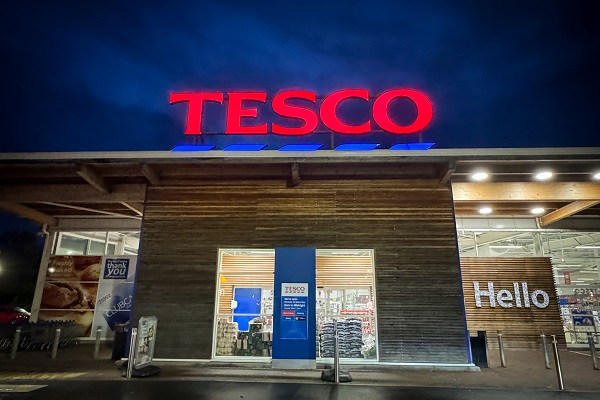Tesco half-year results get warm reception
The UK's largest supermarket chain has delivered another solid set of results, reflecting a strong first half. ii's head of markets explains how it continues to dominate the British aisles.
3rd October 2024 08:28
by Richard Hunter from interactive investor

Tesco (LSE:TSCO) continues to dominate the British aisles through a mixture of relentlessly competitive pricing and innovation.
At present, the group’s market share remains at 27.8%, which is equivalent to that of its nearest rivals (Sainsbury (J) (LSE:SBRY) and Asda) combined. Its sheer scale feeds its appetite for lowering prices for customers through the likes of Aldi Price Match, Low Everyday Prices and Clubcard Prices, while a strong focus on significant cost reduction creates something of a virtuous circle.
- Invest with ii: What is a Managed ISA? | Open a Managed ISA | Transfer an ISA
In the 26 weeks ended 24 August 2024, revenue grew by 2.9% to £34.77 billion, slightly above estimates, while adjusted operating profit rose by 15.6% to £1.65 billion, comfortably ahead of expectations of £1.53 billion. The strength of this first-half performance has also led Tesco to upgrade its forecast for the full year, where it now expects adjusted operating profit of £2.9 billion, compared to the figure of at least £2.8 billion which it previously guided.
The range of the group’s offering is not limited to the more cost-conscious consumer, and more recently Tesco has honed its upper-end offering, with a subsequent rise of 19.9% in Finest volumes compared to the previous year. It continues to attack the competition on all fronts, with growth of 4.2% in large store sales and a further 9.3% increase in online revenues, which account for 13.5% of the group total. In addition, its Clubcard is now in front of 23 million households within the UK, while its Home & Clothing unit has swung to positive growth of 0.3% after what had been a challenging period.
Inevitably challenges will remain, even though Tesco is on the front foot to face them. Consumers have yet to see the full benefits of falling inflation, although wage increases have offset some of these challenges. The group’s Booker unit reported a dip in sales of 1.9%, largely driven by ongoing tobacco market weakness and lower volumes through its Best Food outlet, although at 13% of overall revenues the impact is more than offset by strength elsewhere in the business.
- Sign up to our free newsletter for investment ideas, latest news and award-winning analysis
- eyeQ: is Terry Smith right about Diageo shares?
- Tesco shares are top pick as major milestone looms
At the same time, the group is also bearing down on costs, with a saving in the first half of £260 million leaving the full-year target of £500 million well within sight. Indeed, some of the investment in lowering grocery prices was previously enabled by a parallel concentration on cost reduction announced at the full-year results in April, where £640 million of savings was delivered against a target of £600 million.
The impact of Tesco’s prodigious cash generative ability also feeds through to improving the financial strength of the business. Net debt was reduced by 2% in the period to £9.7 billion, free cash flow for the year is still expected to be in a range of between £1.4 billion and £1.8 billion, while the previously announced £1 billion share buyback programme remains on track. An increase of 10% to the dividend payment leads to a projected yield of 3.5%, with every possibility of more to come in terms of shareholder returns.
While Tesco continues to flex its muscles in a notoriously competitive environment, expectations also progressively increase, lessening the likelihood of positive shocks for investors.
- A stock opportunity that only comes once a year
- Best and worst UK shares in Q3 2024
- Share Sleuth: tempting stock is new addition to the portfolio
Even so, this has done little to constrain a share price which has risen by 36% over the last year, as compared to a gain of 11% for the wider FTSE100, and by 72% over the last two years. Despite this rally, the shares remain below the longer-term historic valuation, which suggests room for further appreciation. In the meantime, the longstanding market consensus of the shares as a strong buy and the preferred play in the sector is unlikely to waver.
These articles are provided for information purposes only. Occasionally, an opinion about whether to buy or sell a specific investment may be provided by third parties. The content is not intended to be a personal recommendation to buy or sell any financial instrument or product, or to adopt any investment strategy as it is not provided based on an assessment of your investing knowledge and experience, your financial situation or your investment objectives. The value of your investments, and the income derived from them, may go down as well as up. You may not get back all the money that you invest. The investments referred to in this article may not be suitable for all investors, and if in doubt, an investor should seek advice from a qualified investment adviser.
Full performance can be found on the company or index summary page on the interactive investor website. Simply click on the company's or index name highlighted in the article.